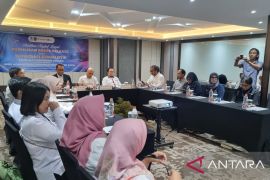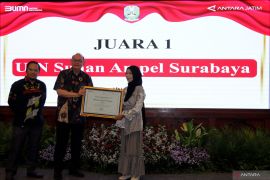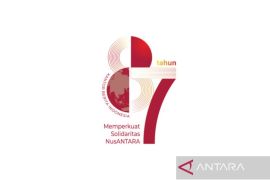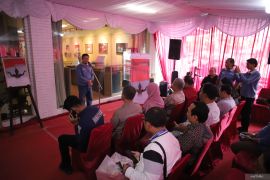Surabaya, E Java, (Antara) - Surabaya Police's special crime investigation directorate has brought to light the illegal trading of wildlife through Facebook and later detained two suspects identified as SS and HS.
"We have seized 11 protected animals that were to be illegally sold in Thailand," Crime Division Director of Police Chief Commissioner Agus Santoso stated in Surabaya, E Java, Friday.
The police officers raided the location of the suspects in Sidoarjo and found seven protected Citron-crested cockatoos, 26 Yellow-crested cockatoos, six Black-capped lorries, three Pesquet's or Vulturine parrots, three Eclectus parrots, and two critically endangered Lesser Bird-of-paradise.
The police then seized a logbook of wildlife trade, two savings books, three transaction notes, and a pack of letters on the delivery of animals.
Santoso noted that the suspects had traded the animals online by using two Facebook accounts: Gusti Slankers Funkyjunki'es and Wine Wine.
"These smugglers have been operating for three years. However, we have yet to know the profits they had generated from the illegal trade," he noted.
The suspects have admitted that most birds were sold for Rp5-6 million each, but for the Bird-of-Paradise (Cendrawasih), the price was much higher.
Following the incident, East Java Natural Resources Conservation Agency Chairman Nandang Prihadi lauded the police's operation to reveal the wildlife trade network in Indonesia.
"Apart from this case, the police of Bangkalan and Probolinggo have also revealed the illegal wildlife trade in East Java. Most suspects are old smugglers, and they will be awarded tougher penalties than before," Prihadi stressed.
The protected animals are currently being treated by the conservation agency.
Prihadi expressed hope that the judge would immediately determine the fate of these animals on whether they would be kept in a shelter or returned back into the wild.
Taking into account their crimes, the two suspects will face five years' in jail and a fine of Rp100 million in accordance with Article 21 No. 2 (a) and (c) and Article 40 No. 2 of Law No. 5 of 1990 on Natural Resources and Ecosystem Conservation as well as Government Regulation No. 7 on Preserving Dead Protected Animals.(*)
Reported by Willy Irawan










